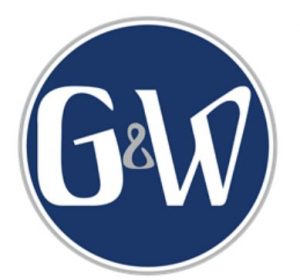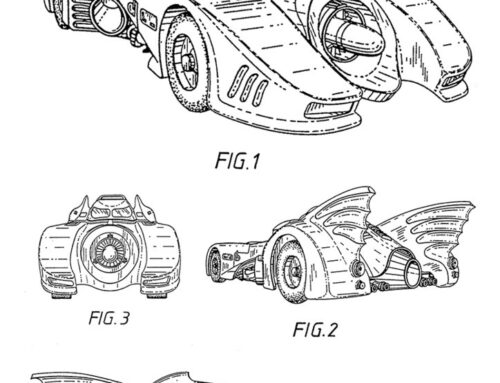Abandoned Patent Applications
Grell & Watson tracks the U.S. Patent and Trademark Office and the Copyright Office for news. Please find their most recent update below.
Patent Abandonment
 Patent application abandonment or patent abandonment means that a patent application is no longer pending or a patent is no longer valid, respectively. In the case of issued U.S. patents, this can occur due to failure to pay patent maintenance fees or when a patent owner expressly abandons his or her patent with a written declaration of abandonment. For U.S. patent applications, this generally occurs when, during the pendency of an application, an applicant fails to reply within six (6) months of the mail date of an Office Action from the USPTO patent examiner. Other circumstances of application abandonment include, but are not limited to, failure to pay issue fees after allowance and incomplete replies by applicants who then fail to cure the deficiencies within specified timeframes. Express or written abandonment is also possible, though it is generally reserved for cases where an applicant wishes to prevent the application’s publication.
Patent application abandonment or patent abandonment means that a patent application is no longer pending or a patent is no longer valid, respectively. In the case of issued U.S. patents, this can occur due to failure to pay patent maintenance fees or when a patent owner expressly abandons his or her patent with a written declaration of abandonment. For U.S. patent applications, this generally occurs when, during the pendency of an application, an applicant fails to reply within six (6) months of the mail date of an Office Action from the USPTO patent examiner. Other circumstances of application abandonment include, but are not limited to, failure to pay issue fees after allowance and incomplete replies by applicants who then fail to cure the deficiencies within specified timeframes. Express or written abandonment is also possible, though it is generally reserved for cases where an applicant wishes to prevent the application’s publication.
Sometimes inventors become too busy, life gets in the way, or prosecuting their patent becomes overwhelmingly complicated. If they delay too long in responding to USPTO correspondence, they may unintentionally abandon their application and their invention can enter the public domain. In this article, we cover how abandonment might happen and steps you can take to get your application back on track.
Petitioning to Revive an Abandoned Patent Application – After Two Months
If the holding of abandonment is not being disputed, an abandoned U.S. patent application may be revived only on the basis of unintentional delay. If the delay in reply by applicant was unintentional or unavoidable, a petition to the Director may be filed to revive the application. Under 37 C.F.R. 1.137, the petition requires (i) the reply required to the outstanding Office Action; (ii) the petition fee of $850 for a small entity; (iii) a terminal disclaimer and corresponding fee of $160; and (iv) a statement that the entire delay in filing the required reply from the due date for the reply until the filing of a grantable petition pursuant to this section was unintentional. In the case of failing to reply to a Non-Final Office Action, the applicant may file a continuation application which swears priority to the abandoned application instead of its reply to the outstanding Office Action with a continuation application swearing priority to the initial application, in place of (i) the reply required.
While these are the only requirements for filing the petition, the Director of the USPTO may require additional information when there is a question as to whether the entire delay was unintentional. This determination is at the sole discretion of the Director. Should the Director require this additional information, the applicant must then carry the burden of proof to establish that the delay from the due date for the reply until the filing of a grantable petition was unintentional.
This may mean providing reasons, circumstances or excuses for failing to respond along with sufficient written or testamentary evidence corroborating them. Examples might include failure to receive an Office Action and/or a Notice of Abandonment due to change in address or lost mail, failure of an applicant’s representative to communicate the same, the applicant’s physical or mental incapacitation during the period of delay, death of the applicant or a close family relation, or confusion as to the sufficiency of the applicant’s response or the status of its application. Examples do not include the applicant deciding that responding would be too complicated or expensive or otherwise not worthwhile but later changing their mind.
Petitioning to Withdraw the Holding of Abandonment – Within Two Months
In cases where the applicant disputes the USPTO’s determination that the application was abandoned, he or she may petition to withdraw the holding of abandonment. The reasons for petitioning to withdraw the holding of abandonment include (i) non-receipt of USPTO correspondence by an applicant or its representative; (ii) argument that an incomplete response was substantially complete; or (iii) evidence that a reply was timely mailed or filed. In any of these scenarios, 37 C.F.R. 1.181(f) provides that any petition not filed within two (2) months of the Notice of Abandonment may be dismissed as untimely. Therefore, applicants that have been recently notified that their applications have been abandoned, must move quickly to petition the USPTO to withdraw the holding of abandonment.
If you have received a notice of abandonment but still wish to receive a patent for your invention, it may not be too late to fix your mistake. Since you’ll need to prepare important documents and critical dates and evidence are crucial to continuing your application, it may be time to hire a patent attorney. If you’d like our help or have any questions before filing, please call Grell & Watson Patent Attorneys for a free consultation.
Abandoned Patent Applications
Call for a Free Consultation with a Patent Attorney or Trademark Attorney.
By Richard Piercy
IP Lawyers:
Ext. 104 – Atlanta I-75 & Downtown – (404) 596-7333

